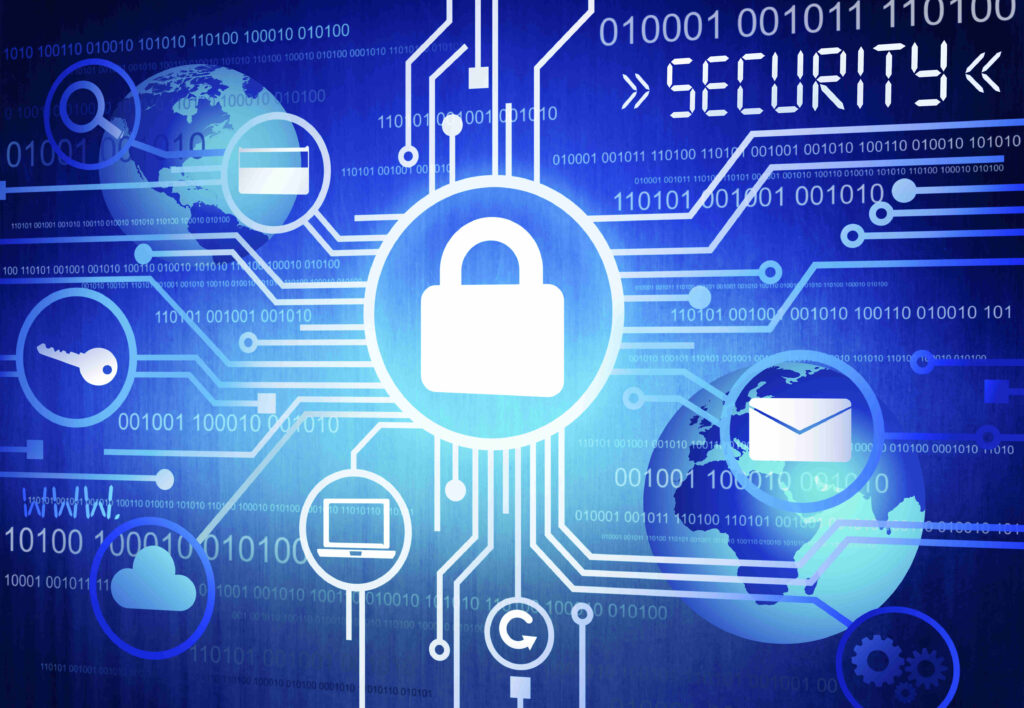Ransomware attacks have become one of the most significant threats to businesses of all sizes. These malicious attacks can cripple operations, lead to significant financial losses, and damage a company’s reputation. Protecting your business from ransomware requires a proactive approach, combining robust cybersecurity measures, employee education, and a well-prepared incident response plan. This article will provide a comprehensive guide on how to safeguard your business from ransomware attacks, ensuring you are well-equipped to handle this growing threat.
Ransomware: What It Is and How It Works
Ransomware is a type of malicious software designed to block access to a computer system or data until a ransom is paid. It typically encrypts files, making them inaccessible to the user. The attackers then demand payment, often in cryptocurrency, in exchange for the decryption key.

How Ransomware Infects Systems
Ransomware can infiltrate systems through various methods, including:
- Phishing Emails: Attackers send emails that appear to be from legitimate sources, tricking recipients into clicking on malicious links or downloading infected attachments.
- Malicious Websites: Visiting compromised websites can lead to drive-by downloads, where ransomware is automatically downloaded and installed on the user’s device.
- Remote Desktop Protocol (RDP) Exploits: Weak or exposed RDP credentials can be exploited by attackers to gain access to a network and deploy ransomware.
- Software Vulnerabilities: Outdated software with unpatched vulnerabilities can provide an entry point for ransomware.
Understanding how ransomware operates is the first step in developing a defense strategy. By recognizing the common entry points, businesses can implement targeted measures to reduce the risk of infection.
The Impact of Ransomware on Businesses
The consequences of a ransomware attack can be devastating. Beyond the immediate financial burden of paying the ransom, businesses may face:
- Operational Disruption: Encrypted files can bring business operations to a halt, leading to downtime and lost productivity.
- Financial Losses: In addition to the ransom, businesses may incur costs related to data recovery, legal fees, and regulatory fines.
- Reputational Damage: A ransomware attack can erode customer trust and damage a company’s reputation, especially if sensitive data is compromised.
- Legal and Regulatory Consequences: Businesses may face legal action or regulatory penalties if they fail to protect customer data adequately.
The impact of ransomware extends beyond the immediate attack, making it essential for businesses to take proactive steps to protect themselves.
Building a Strong Cybersecurity Foundation
A robust cybersecurity framework is the cornerstone of ransomware protection. Here are some key components to consider:
1. Implement Advanced Endpoint Protection
Endpoint protection solutions, such as antivirus and anti-malware software, are essential for detecting and blocking ransomware. Modern endpoint protection tools use advanced techniques like behavioral analysis and machine learning to identify and neutralize threats before they can cause harm.
2. Regularly Update and Patch Software
Outdated software is a common target for ransomware attacks. Ensure that all software, including operating systems and applications, is regularly updated with the latest security patches. Automated patch management tools can help streamline this process.
3. Use Firewalls and Intrusion Detection Systems
Firewalls act as a barrier between your network and potential threats, while intrusion detection systems (IDS) monitor network traffic for suspicious activity. Together, these tools can help prevent unauthorized access and detect ransomware before it spreads.
4. Secure Remote Desktop Protocol (RDP)
If your business uses RDP, ensure it is properly secured. Use strong, unique passwords, enable multi-factor authentication (MFA), and consider using a virtual private network (VPN) for additional security.
5. Implement Network Segmentation
Network segmentation involves dividing your network into smaller, isolated segments. This limits the spread of ransomware, as an infection in one segment is less likely to affect the entire network.
Educating Employees: The Human Firewall
Employees are often the first line of defense against ransomware. Educating your staff on cybersecurity best practices can significantly reduce the risk of an attack.
1. Conduct Regular Training Sessions
Provide regular training sessions to educate employees on recognizing phishing emails, avoiding malicious websites, and following safe browsing practices. Simulated phishing exercises can help reinforce these lessons.
2. Promote a Culture of Security
Encourage employees to take an active role in protecting the company’s data. This includes reporting suspicious emails, using strong passwords, and following established security protocols.
3. Implement a Password Policy
Require employees to use strong, unique passwords and change them regularly. Consider using a password manager to simplify this process and reduce the risk of password-related breaches.
4. Limit Access to Sensitive Data
Not all employees need access to sensitive data. Implement role-based access controls to ensure that employees only have access to the information necessary for their job functions.
Data Backup and Recovery: Your Safety Net
In the event of a ransomware attack, having a reliable data backup and recovery plan can be the difference between a minor disruption and a major catastrophe.
1. Regularly Back Up Data
Ensure that all critical data is backed up regularly. Use the 3-2-1 rule: keep three copies of your data, on two different types of media, with one copy stored offsite.
2. Test Your Backups
Regularly test your backups to ensure they can be restored quickly and completely. A backup is only useful if it can be successfully restored.
3. Use Immutable Backups
Immutable backups cannot be altered or deleted, even by ransomware. This ensures that your backup data remains safe and can be used to restore your systems after an attack.
4. Develop a Disaster Recovery Plan
A disaster recovery plan outlines the steps to take in the event of a ransomware attack. This includes identifying critical systems, prioritizing recovery efforts, and communicating with stakeholders.
Incident Response: Preparing for the Worst
Despite your best efforts, there is always a risk of a ransomware attack. Having a well-prepared incident response plan can help minimize the damage and ensure a swift recovery.
1. Assemble an Incident Response Team
Designate a team of individuals responsible for managing the response to a ransomware attack. This team should include IT staff, legal advisors, and communication specialists.
2. Develop a Communication Plan
In the event of an attack, clear and timely communication is essential. Develop a plan for communicating with employees, customers, and other stakeholders, including templates for notifications and updates.
3. Know When to Involve Law Enforcement
In some cases, it may be necessary to involve law enforcement. Familiarize yourself with the appropriate contacts and procedures for reporting a ransomware attack.
4. Evaluate the Option to Pay the Ransom
Paying the ransom is a controversial decision. While it may result in the recovery of encrypted data, there is no guarantee that the attackers will provide the decryption key. Additionally, paying the ransom may encourage further attacks.
Frequently Asked Questions (FAQs)
1. What is ransomware?
Ransomware is a type of malicious software that encrypts files or locks users out of their systems until a ransom is paid.
2. How does ransomware infect a system?
Ransomware can infect systems through phishing emails, malicious websites, RDP exploits, and software vulnerabilities.
3. What should I do if my business is hit by ransomware?
If your business is hit by ransomware, isolate the infected systems, notify your incident response team, and follow your disaster recovery plan. Avoid paying the ransom if possible.
4. How can I prevent ransomware attacks?
Prevent ransomware attacks by implementing strong cybersecurity measures, educating employees, regularly backing up data, and having a well-prepared incident response plan.
5. Should I pay the ransom if my business is attacked?
Paying the ransom is generally discouraged, as it does not guarantee the recovery of your data and may encourage further attacks. Focus on restoring your systems from backups instead.
Conclusion
Ransomware attacks pose a significant threat to businesses, but with the right precautions, you can protect your organization from this growing menace. By understanding how ransomware works, building a strong cybersecurity foundation, educating employees, and preparing for potential incidents, you can significantly reduce the risk of an attack. Remember, the key to ransomware protection is a proactive and comprehensive approach. Stay vigilant, stay informed, and take the necessary steps to safeguard your business.

